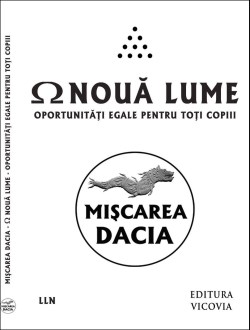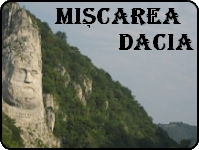 Vă invit să vă alăturaţi grupului Facebook Mişcarea DACIA, ce-şi propune un alt fel de a face politică!
Vă invit să vă alăturaţi grupului Facebook Mişcarea DACIA, ce-şi propune un alt fel de a face politică!Citiţi partea introductivă şi proiectul de Program, iar dacă vă place, veniţi cu noi !
O puteţi face clicând alături imaginea, sau acest link
Posts Tagged ‘Abstract Zero’
EXISTENCE
EXISTENCE
by Thomas Foster
Existence (ontological zero) ‘beats’ non-existence (abstract zero), hands down. There is no sufficient reason to prevent ontological zero (infinity, everything, the universe) from existing.
Non-existence, by definition, CANNOT exist. It has no properties, no ontology. Only ‘existence’ exists. Non-existence does not exist. This makes no sense. It would violate the PSR. It has no means to exist.
*****
“Existence can be modelled mathematically as infinite zeros of infinite content.
Non-existence can be modelled mathematically as infinite zeros of zero content.
What do we mean by non-existence? We mean a universe with no content, no features, no capabilities, no possibilities – where nothing can ever happen. This, of course, is not a universe at all – it’s absolute nothingness. Absolute nothingness is infinite contentless zeros.
Existence is absolute somethingness – infinite zeros but of infinite rather than content.
If we bring the respective sets of zeros together (i.e. those with infinite content and those with no content), the ones without content have no effect, so they cede the stage to the zeros with infinite content. Existence and non-existence are thus locked together, but the latter has no observable or conceivable effect, hence existence is left to itself to provide all possible causes and effects.
This is the reason why there is something rather than nothing. This is why we exist. There is no sufficient reason for non-existence to defeat existence but there is a sufficient reason for existence to defeat non-existence.” (Mike Hockney, Hyperreality)
*****
“Since it’s absurd to assert that there was neither non-existence nor existence (one or other must be true), perhaps we are to understand this as a claim that there was no clear distinction between the two: they were so intermixed that they could not be defined separately. Yet, logically, this cannot be the case. Existence and non-existence can never mix. They can never be together. One permanently excludes the other, unless we take the view that non-existence is that which has no possible effect on existence, has no consequences of any kind, is entirely empty, contentless and redundant; in which case an infinite “amount” of non-existence could be forever “present” with an infinite amount of existence. But since it would have no impact whatever, why say it was “there” at all? We could simply conclude that existence was on its own.
Either non-existence has no consequences with regard to existence (in which case it’s a superfluous hypothesis and can be dismissed) or it excludes the possibility of existence, in which case we wouldn’t be here. Since we are, non-existence can be safely dismissed. Whatever way you look at it, non-existence is refuted.
When we use words such as “nothing”, “space”, “void” and “vacuum”, we certainly can’t mean “non-existence” since this is an impossible or 100% ineffectual concept.” (Mike Hockney, Hyperreality)
*****
“Abstract zero, the zero of non-existence, has no properties, qualities or consequences.
Ontological zero, the zero of existence, has infinite energy.
We can think of the two types of 0 coexisting, in a manner of speaking, but abstract zero (non-existence) adds nothing to ontological zero (existence), hence has no observable consequences.
Science treats zero as non-existence. Ontological mathematics treats it as pure existence, containing infinity. To be infinite means to contain all numbers (all frequencies of energy).
Zero is the origin. From the zero of non-existence, nothing comes. From the zero of existence, everything comes.” (Mike Hockney, Hyperreality)












